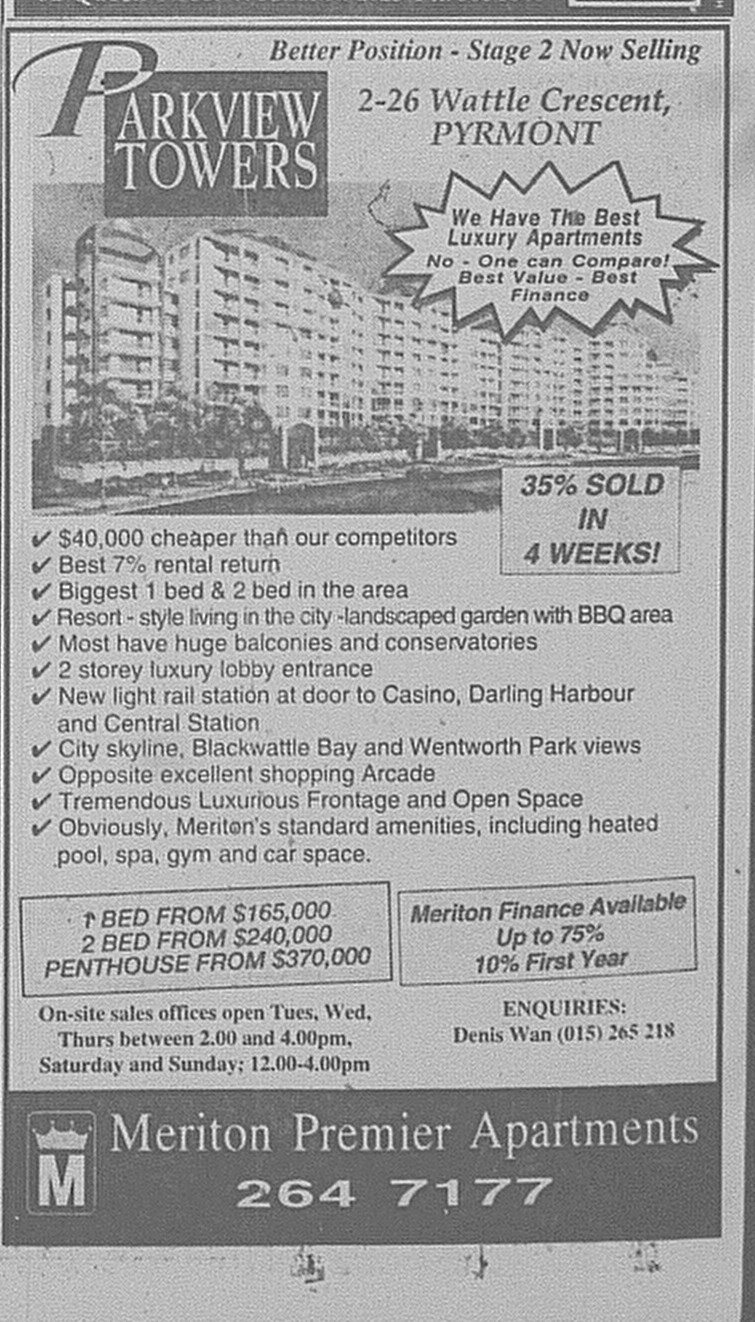It is currently a one level shopping centre, containing a Coles Supermarket and food retailers to cater for commuters using the railway station and transport interchange. There is a rooftop carpark above with medical centre
The Centre has traded since 1965 and was seen as essential to reviving Hurstville's retailing precinct, which was being threatened by the opening of shopping complexes at Miranda (Miranda Fair) and Roselands.
Original plans from the early 1960s called for much more believe it or not. This included:
- Extra parking
- "Prestige" shopping level above the existing shopping centre.
- Offices
- Apartments (Approximately six levels)
At the time of the opening of stage one in 1965, customers were promised a lot more in the future than the fifty shops and rooftop carpark that they were getting.
Source: Anon. 1965. "This is It! The Start of a new era in shopping convenience" (Advertisement). The St George and Sutherland Shire Leader: 30 & 31.
Even in 1970, there will still hope it would proceed as per original plans:
Source: Anon. 1970. "Scheme Still Alive". The St George and Sutherland Shire Leader, May 27: 7.
The development was never built further than stage one. In the 1970s, Westfield was built nearby including the arcade that links it with Forest Road. By the 1990s the centre went into a gradual decline. Even Franklins (which had replaced Coles) disappeared. By the mid-2000s the centre was desolate with large areas vacant and the structure itself in a bad state. Proposals were changed yet never saw the light of day. I took these photos in 2006 which show its bad condition.
A change of ownership a decade ago saw a major interior upgrade of the cent. As part of the process, it was rebranded as Hurstville Central. Coles returned and the centre itself is doing quite well with most spaces occupied. Below are several photos of the current centre from 2008.
What if?
You might be asking yourselves the What If? question. This is what I think might have happened had the development proceeded.
- More flexible highrise development in Hurstville's CBD on both the Kogarah Council and Hurstville Council sides. The presence of the highrise unit blocks would have given the incentive to build. While Hurstville contains its fair share of highrises today, maybe we might have seen a few more.
- The Super Centre would probably have declined in status as time went along. Space to expand would have been limited i.e -built to Ormonde Parade with limited room for expansion into Forest Road.
- Struggled to get tenants for it's "prestige" shopping floor. Hurstville is traditionally seen as a working-class suburb and getting some high-end boutiques into Hurstville might have been tough.




















